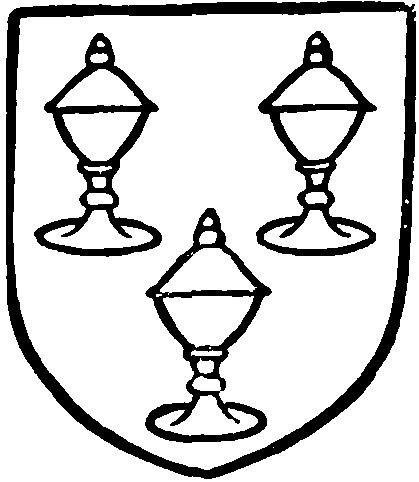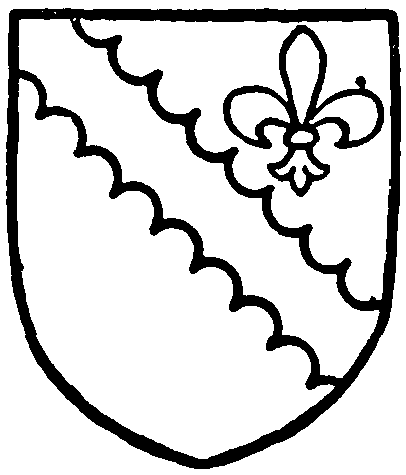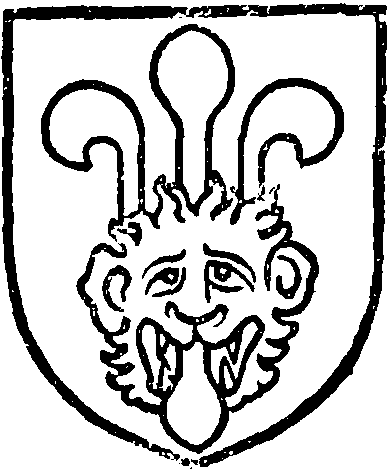A History of the County of Lancaster: Volume 6. Originally published by Victoria County History, London, 1911.
This free content was digitised by double rekeying. All rights reserved.
'Townships: Mearley', in A History of the County of Lancaster: Volume 6, ed. William Farrer, J Brownbill (London, 1911), British History Online https://prod.british-history.ac.uk/vch/lancs/vol6/pp375-379 [accessed 19 April 2025].
'Townships: Mearley', in A History of the County of Lancaster: Volume 6. Edited by William Farrer, J Brownbill (London, 1911), British History Online, accessed April 19, 2025, https://prod.british-history.ac.uk/vch/lancs/vol6/pp375-379.
"Townships: Mearley". A History of the County of Lancaster: Volume 6. Ed. William Farrer, J Brownbill (London, 1911), British History Online. Web. 19 April 2025. https://prod.british-history.ac.uk/vch/lancs/vol6/pp375-379.
In this section
MEARLEY
Merlay, 1241; Merlee, 1272; Merleye, 1302; Morleye, 1306.
This township lies entirely on the summit and western slope of Pendle Hill, Little Mearley being to the north and Great Mearley to the south. There is no village or hamlet, and in 1901 the population numbered forty-one. The area measures 1,509 acres, Great Mearley alone having 1,008 acres. A road from Pendleton to Worston crosses the township northwards, passing the two ancient halls.
The land is mostly used for pasture. The soil is clay, overlying blue clay.
There is a parish meeting.
In 1666 there were thirty-five hearths liable to the tax. The largest houses were those of Joshua Radcliffe with eleven hearths and Henry Standen with eight; the next in size had four hearths and the next three. (fn. 1)
Manors
A member of the Clitheroe fee, MEARLEY with all its appurtenances was in 1102 granted by Robert de Lacy to Ralph le Rous, (fn. 2) possibly an illegitimate son, and the grant was confirmed about forty years later by Ilbert de Lacy. (fn. 3) What became of the inheritance as a whole is unknown, but the Mitton (fn. 4) and Heriz (fn. 5) families seem to have been concerned in it, perhaps by descent. Mearley was assessed as three ploughlands, of which two were in Great Mearley and the other in Little Mearley.
The descent of GREAT MEARLEY may be traced through a record of the time of Edward II. (fn. 6) Jordan son of Ralph le Rous granted it to Stephen de Mearley. (fn. 7) In 1241 Agnes daughter of Stephen and Adam her son obtained a release of 14 oxgangs of land in Mearley from Eve daughter of Ralph, giving her 8s. (fn. 8) Roger Nowell the son of Adam in 1296 gave part of Mearley to his son Roger, (fn. 9) and in 1302 the two Rogers were said to hold the fourth part of a knight's fee in Great Mearley of the Earl of Lincoln. (fn. 10) In 1311 Roger Nowell held two plough-lands in Great Mearley of the earl by the fourth part of a knight's fee and 20d. rent. (fn. 11) Adam Nowell the son of Roger was in possession before 1322, (fn. 12) and occurs down to 1340. (fn. 13) He was succeeded by a son Richard, called 'the elder,' (fn. 14) living in 1357–9, (fn. 15) but dead in 1362, when his widow Alice claimed dower against his son Lawrence. (fn. 16) Lawrence Nowell (fn. 17) in 1364 granted this manor to Sir Richard de Greenacres in exchange for a moiety of Read, (fn. 18) which became the seat of the Nowells.

Nowell of Read. Argent three covered cups sable.
Sir Richard left a son Richard, (fn. 19) whose heirs were two sisters or daughters Joan and Agnes. The former married Henry Worsley, (fn. 20) who died in 1443, holding by the law of England his wife's inheritance in Great Mearley by the thirty-secondth part of a knight's fee and 10d. rent. (fn. 21) His elder son Robert having died in 1438, the whole inheritance passed to Richard Worsley, son of Henry's younger son John, who was twenty-two years of age. (fn. 22) Their part of the estate seems to have been chiefly in Downham and Twiston, where the later descents will be found. Agnes Greenacres married William Radcliffe of Todmorden, (fn. 23) and the estate, later called the manor, descended in that family, being said to be held of the king as of his duchy by knight's service and a rent. (fn. 24) In 1701 Roger Mainwaring, who had married Elizabeth, the only child of Joshua Radcliffe of Todmorden, sold the manor of Great Mearley to John Harrison. (fn. 25) After the death of John's son Allan (fn. 26) it was sold for the benefit of his creditors by order of the Court of Chancery in 1758 to Piers Starkie of Huntroyde, (fn. 27) and has since descended in that family. No manor seems now to be claimed.

Radcliffe of Todmorden. Argent a bend engrailed sable, a fleur de lis gules for difference.
Mearley Hall stands on the lower slope of Pendle Hill, about the middle of the township, but is a modern farm-house of no interest. The old hall was pulled down about 1886, and only the tall gate piers with ball ornaments and the high fence wall now remain. An account of the building (fn. 28) as it then stood, written in 1883, describes the ground plan as nearly complete 'with central portions and two projecting wings.' Part of the house had been restored and over the door was a stone with the arms of Radcliffe of Todmorden. The eastern wing, described as the most interesting part of the house, was then partly roofless and in ruins. A winding staircase which led from the large south-east room on the ground floor had been completely wrecked, and the oak panels of the wainscot lay broken among the debris. The masonry, however, was still compact and firm. The chief architectural features of the house, which seems to have belonged to the 16th century and faced north, were its gables, chimneys, and long projecting stone gargoyles.
The younger Roger Nowell in 1296 obtained, as above stated, a part of Great Mearley from his father (fn. 29); this he gave in 1305 to Richard de Morley and Elizabeth his wife. (fn. 30) Richard was killed at Mearley in 1320–1. (fn. 31) The estate continued for many generations in the family of Morley of Wennington; it was held of the king as duke by knight's service, sometimes defined as the sixth part of a knight's fee. (fn. 32) It was sold about 1570. (fn. 33)
One or two other landowners occur. (fn. 34)
The formation and descent of LITTLE MEARLEY are obscure. In 1242 William the Marshal held the tenth part of a knight's fee there, and Hugh de Mearley held the fifty-sixth part of a fee. (fn. 35) It appears that John de Lacy, who died in 1241, had granted to William Nowell, who must be the same as the Marshal, the whole of Little Mearley to be held by the twelfth part of a knight's fee. (fn. 36) In 1243 the earl's action was complained of as unjust, and Margery widow of Ellis de Snelleshou sought to recover against William Marshal the third part of 2 oxgangs of land as her dower. (fn. 37) In 1311 William de Heriz held one plough-land in Little Mearley by the eighth part of a knight's fee and 9½d. rent, (fn. 38) but in 1349 his heirs were stated to hold the twelfth part of a fee. (fn. 39) In 1355 the heirs of Hugh de Mearley were found to hold his fraction, while Marshal's part was held by John de Morley, Richard Nowell and John de Greenacres, (fn. 40) and a similar record occurs later. (fn. 41)
The Nowells, probably related to the Great Mearley family, appear to have acquired nearly the whole of this part of the township, (fn. 42) but little is known of them (fn. 43) till the time of Henry Nowell, who was in possession in 1470. (fn. 44) He died in 1504 or 1505 holding the manor of Little Mearley of the king as duke by the tenth part of a knight's fee. (fn. 45) The manor descended in the male line (fn. 46) until about 1670, and since then by female descents to the late Thomas PrestonHolt of Worston. (fn. 47)

Morley. Sable a leopard's face or jessant de lis argent.
LITTLE MEARLEY HALL stands in a pretty situation on the slope of Pendle Hill about half a mile to the north of Mearley Hall on what Dr. Whitaker called a 'lingula of land formed by the rocky channels of two torrents.' (fn. 48) It is now a farm-house, and though much repaired and modernized retains some of its ancient features. The building, which is of stone and of two stories, is 58 ft. in length and 35 ft. wide, the longer sides facing east and west and the south end projecting on the west side 8 ft. as a gabled wing. The east side facing the hill is built of rough stone partly rough-cast and retains for the most part its original low mullioned windows, one of which in the upper floor has round-headed lights. The north end of the house, however, seems to have been rebuilt and the windows are modern, and on the east side the roof is covered with modern blue slates, the rest retaining the original ones of stone. The doorway on the east side has a four-centred arch with square hood mould and moulded jambs and head above which is a stone panel dated 1590 with the arms of Nowell quartering Walmesley and the initials of Christopher Nowell and Elizabeth (Walmesley) his wife. The date is probably that of the greater part of the building, though the west side has been refronted with large square stones and has squareheaded barred sash windows. The gable, however, retains its mullioned windows on each floor. But the most interesting architectural feature of the house is the semi-octagonal bay window at the north end of the west front, which was brought here from Sawley Abbey after the Dissolution. (fn. 49) The detail is late and the window belongs probably to the early 16th century, but the tracery has been cut away (fn. 50) and wooden sash frames inserted, the rest of the stonework, however, being well preserved. At each angle is a buttress, square below and octagonal above, on two of which are shields, one with a lion rampant and the other a crescent within the horns of which are two smaller crescents addorsed. Another shield held by an angel at the termination of the hood mould at the north end has five fusils on a chief. The richness of the detail of the stonework is in great contrast to the rest of the house on that side, and the effect is extremely good. The south end of the building, which is built in the same rough stone as the east front partly rough-cast, has three built-up mullioned windows, an external chimney and a larger square projection. At the south-west angle the wall appears to have been originally carried further south or to have been intended to be so. A small garden on the west side is inclosed by a low stone terrace wall, the ground sloping down to a small stream. Various fragments of late Gothic stonework lie about, and from the terrace there is a fine view across the Ribble Valley.
In 1552 some Clitheroe men were fined for fishing in the king's waters in Little Mearley, taking 'keper trowttes' there contrary to the statute. (fn. 51)
In 1590 Richard Greenacres, on behalf of the tenants of Worston, complained that the lords of the adjacent Downham and Mearley had claimed part of the moors and other common pastures of Worston. The bounds were defined only by plain crosses, meres or marked stones, and they desired a perambulation. The lords of Mearley—Henry son of Charles Radcliffe, Christopher Nowell and the daughter and heir of John Hoghton—defended their title. Nowell, who was interested in both manors, having a large copyhold estate in Worston, asserted that Langley Ditch was the boundary, (fn. 52) and this seems to have been agreed upon in 1593. (fn. 53)
The land tax returns of 1789 show that Le Gendre Starkie and Mrs. Townsend were the chief owners.